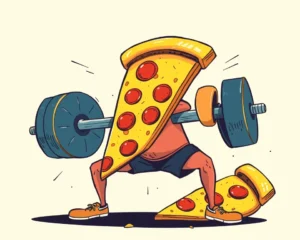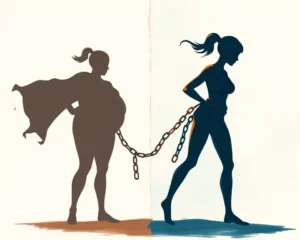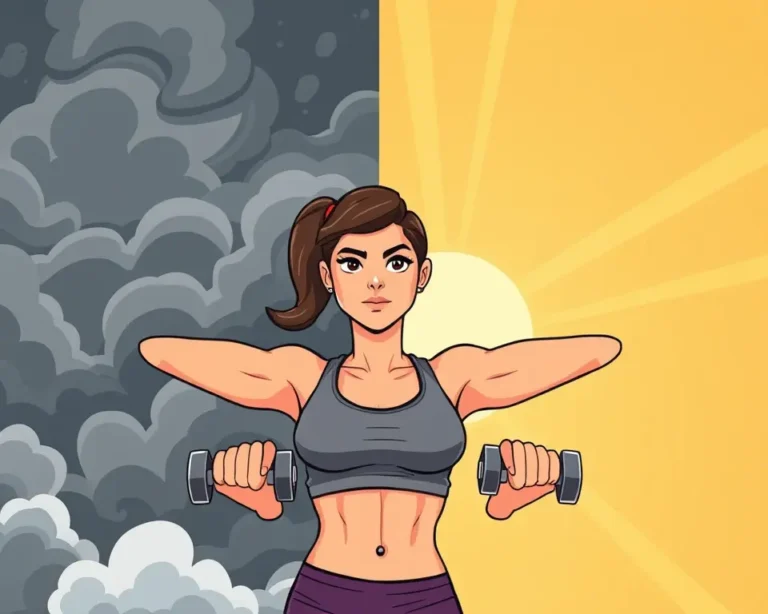A fitness influencer is sharing his journey of recovery from Guillain-Barre syndrome, a rare neurological disorder. At 26, he faced paralysis and a daunting road to rehabilitation.
The Onset of a Rare Condition
Guillain-Barre syndrome (GBS) is a rare autoimmune disorder in which the body’s immune system attacks the nerves. This can lead to muscle weakness, pain, and even paralysis. While the exact cause of GBS isn’t fully understood, it often follows a viral or bacterial infection.
Recognizing the Symptoms
The initial symptoms of GBS can be easily mistaken for other, less serious conditions. These may include:
- Tingling or weakness in the hands and feet
- Difficulty walking
- Severe pain, particularly at night
- Problems with vision or bladder control
In the fitness influencer’s case, he initially experienced unusual weakness in his legs, which gradually worsened over a few days. Concerned, he sought medical attention, leading to a diagnosis of GBS.
Diagnosis and Initial Treatment
Diagnosing GBS typically involves a neurological examination, a review of symptoms, and tests such as a spinal tap (lumbar puncture) and electromyography (EMG).
Two primary treatments are used to manage GBS:
- Plasma exchange (plasmapheresis): This procedure removes antibodies from the blood that are attacking the nerves.
- Intravenous immunoglobulin (IVIg): This involves injecting high doses of antibodies to help block the harmful antibodies causing the nerve damage.
The fitness influencer received IVIg therapy, which helped to stabilize his condition and prevent further nerve damage.
The Road to Recovery: A Testament to Perseverance
Recovery from GBS can be a long and challenging process, often requiring extensive physical therapy and rehabilitation. The fitness influencer’s recovery journey highlights the importance of perseverance, determination, and a positive mindset.
Physical Therapy and Rehabilitation
Physical therapy is a crucial component of GBS recovery. It helps to:
- Regain muscle strength and coordination
- Improve range of motion
- Reduce pain and stiffness
- Increase independence
The fitness influencer engaged in a rigorous physical therapy program that included exercises to strengthen his muscles, improve his balance, and regain his ability to walk. He also incorporated other therapies, such as occupational therapy, to help him regain fine motor skills and adapt to daily activities.
Mental and Emotional Well-being
Dealing with a diagnosis like GBS can take a significant toll on mental and emotional well-being. It’s common to experience anxiety, depression, and feelings of isolation.
The fitness influencer emphasized the importance of seeking support from family, friends, and mental health professionals. He also found strength in his passion for fitness, using exercise as a way to cope with stress and maintain a sense of control over his body.
Diet and Nutrition
Proper nutrition plays a vital role in supporting recovery from GBS. A balanced diet rich in protein, vitamins, and minerals can help to:
- Promote nerve regeneration
- Reduce inflammation
- Boost the immune system
- Increase energy levels
The fitness influencer followed a healthy diet plan that focused on whole foods, lean protein sources, and plenty of fruits and vegetables. He also worked with a registered dietitian to ensure that he was getting the nutrients he needed to support his recovery.
Lessons Learned and Inspiration for Others
The fitness influencer’s story is an inspiring example of how determination and a positive attitude can help overcome even the most daunting health challenges. He shares some of the key lessons he learned during his recovery journey:
- Listen to your body: Pay attention to early warning signs and seek medical attention promptly.
- Be patient: Recovery takes time, and there will be setbacks along the way.
- Stay positive: A positive mindset can make a significant difference in your ability to cope with challenges.
- Seek support: Don’t be afraid to ask for help from family, friends, and healthcare professionals.
- Never give up: Believe in your ability to recover and keep pushing forward, even when it’s difficult.
Raising Awareness
By sharing his story, the fitness influencer hopes to raise awareness about GBS and inspire others who are affected by the condition. He emphasizes the importance of early diagnosis and treatment, as well as the need for ongoing support and rehabilitation.
Staying Active
He also underscores the importance of maintaining an active lifestyle, even after recovering from GBS. Regular exercise can help to improve muscle strength, coordination, and overall fitness, as well as boost mental and emotional well-being.
Future Outlook
While the long-term outlook for people with GBS varies, many individuals are able to make a full recovery. The fitness influencer continues to work hard to maintain his health and fitness, and he remains committed to inspiring others to live their best lives, regardless of their health challenges.
Understanding Guillain-Barre Syndrome in Detail
Guillain-Barre Syndrome (GBS) is a rare but serious autoimmune disorder affecting the peripheral nervous system. To fully appreciate the fitness influencer’s journey, it’s essential to delve deeper into the intricacies of this condition.
Causes and Risk Factors
While the exact cause of GBS remains unknown, it’s often triggered by an infection. Common infections associated with GBS include:
- Campylobacter jejuni (a common cause of food poisoning)
- Cytomegalovirus (CMV)
- Epstein-Barr virus (EBV)
- Mycoplasma pneumoniae
- Zika virus
In rare cases, GBS can occur after vaccination. However, the risk of developing GBS after vaccination is very low.
Types of Guillain-Barre Syndrome
There are several types of GBS, each with its own distinct characteristics:
- Acute Inflammatory Demyelinating Polyneuropathy (AIDP): The most common type of GBS in North America and Europe. It is characterized by muscle weakness that starts in the lower body and spreads upwards.
- Miller Fisher Syndrome (MFS): A less common variant, MFS is characterized by paralysis of the eye muscles, unsteady gait, and absent reflexes.
- Acute Motor Axonal Neuropathy (AMAN): More common in Asia and Latin America, AMAN is a severe form of GBS that can lead to permanent disability.
- Acute Motor and Sensory Axonal Neuropathy (AMSAN): A less common variant of GBS, AMSAN affects both motor and sensory nerves.
Diagnostic Procedures
Diagnosing GBS requires a thorough neurological examination and a review of the patient’s medical history. Several diagnostic tests may be performed, including:
- Nerve Conduction Studies (NCS): These tests measure the speed and strength of electrical signals traveling through the nerves.
- Electromyography (EMG): This test measures the electrical activity of muscles.
- Lumbar Puncture (Spinal Tap): This procedure involves collecting a sample of cerebrospinal fluid (CSF) to check for elevated protein levels, which are often seen in GBS.
Treatment Modalities
The primary goals of GBS treatment are to reduce the severity of the symptoms and support the body’s natural healing process. In addition to plasmapheresis and IVIg, other treatments may include:
- Pain Management: Pain relievers, such as opioids and nonsteroidal anti-inflammatory drugs (NSAIDs), may be used to manage pain.
- Respiratory Support: In severe cases, patients may require mechanical ventilation to help them breathe.
- Blood Clot Prevention: Patients who are immobile due to paralysis are at increased risk of developing blood clots. Blood thinners may be used to prevent blood clots.
Potential Complications
GBS can lead to several complications, including:
- Breathing Difficulties: Weakness of the muscles used for breathing can lead to respiratory failure.
- Blood Clots: Immobility can increase the risk of blood clots in the legs or lungs.
- Heart Problems: GBS can affect the heart rate and blood pressure.
- Pain: Nerve damage can cause chronic pain.
- Bowel and Bladder Dysfunction: GBS can affect the nerves that control bowel and bladder function.
Long-Term Prognosis
The long-term prognosis for people with GBS varies. Many individuals make a full recovery within a year, while others may experience long-term disability. Factors that can affect the prognosis include:
- Age
- Severity of the illness
- Type of GBS
- Overall health
Research and Advancements
Ongoing research is focused on better understanding the causes of GBS and developing more effective treatments. Some areas of research include:
- Identifying the specific triggers that cause GBS
- Developing new therapies to block the autoimmune response
- Improving rehabilitation strategies to help patients regain function
Support and Resources
Living with GBS can be challenging, but there are many resources available to help patients and their families. These resources include:
- The Guillain-Barre Syndrome Foundation International (GBS/CIDP Foundation)
- The National Institute of Neurological Disorders and Stroke (NINDS)
- Support groups
- Online forums
Conclusion
The fitness influencer’s story serves as a beacon of hope for individuals facing similar health challenges. His journey underscores the importance of early diagnosis, comprehensive treatment, and unwavering determination in overcoming Guillain-Barre syndrome. By raising awareness and sharing his experiences, he inspires others to prioritize their health, advocate for their well-being, and never give up on the path to recovery.







